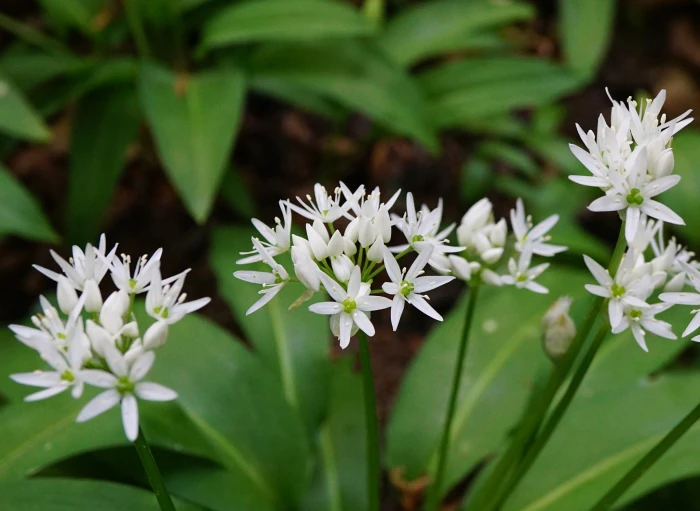Bear’s Garlic
(Allium ursinum)
Bear’s Garlic (Allium ursinum)
/
/

Patrick Hacker
CC BY 4.0






















































Estimated Native Range
Climate Requirements for Port Elizabeth, South Africa
| This Plant | Your Site | Plant Suitability for Your Location | ||
|---|---|---|---|---|
| • Precipitation | 4" - 184" | 22" | Your precipitation may be insufficient for this plant. Irrigate N" / year. | Irrigate N" / year |
| • High Temp. | -54°F - 91°F | 80°F | Your summer temperatures are normal for this plant. | Excellent |
| • Low Temp. | -5°F - 88°F | 47°F | Your winter temperatures are normal for this plant | Excellent |
Summary
Bear’s Garlic is valued for its attractive foliage and early spring flowers, which can add interest to woodland gardens and shaded areas. It is also appreciated for its culinary uses, as the leaves have a mild garlic flavor and are used in salads, soups, and sauces. In cultivation, it prefers moist, well-drained soils and can tolerate full shade to part shade conditions. While it is generally low-maintenance, it can spread rapidly under ideal conditions and may become invasive outside its native range. Gardeners should be cautious about planting it in areas where it can spread uncontrollably.CC BY-SA 4.0
Plant Description
- Plant Type: Bulb
- Height: 0.5-1 feet
- Width: 0.5-1 feet
- Growth Rate: Moderate
- Flower Color: White
- Flowering Season: Spring
- Leaf Retention: Deciduous
Growth Requirements
- Sun: Full Sun, Part Shade
- Water: Medium
- Drainage: Slow, Medium
Common Uses
Bee Garden, Bird Garden, Butterfly Garden, Deer Resistant, Drought Tolerant, Edible*Disclaimer: Easyscape's listed plant edibility is for informational use. Always verify the safety and proper identification of any plant before consumption., Fragrant, Groundcover, Hummingbird Garden, Low Maintenance, Rabbit Resistant, Rock Garden, Showy Flowers
Natural Habitat
Damp shaded woods and grasslands in Central and Northern Europe, as well as in Britain and Ireland
Other Names
Common Names: Bear Garlic, Wild Garlic, Ramsons, Wild Cowleek, Cowlic, Buckrams, Broad-Leaved Garlic, Wood Garlic, Bear Leek, Eurasian Wild Garlic
Scientific Names: Allium ursinum, Allium ursinum subsp. ucrainicum, Allium petiolatum, Allium latifolium, Allium ursinum var. ucrainicum, Ophioscorodon ursinum, Aglitheis ursina, Allium latifolium oppr, Allium longipetiolatum
GBIF Accepted Name: Allium ursinum L.